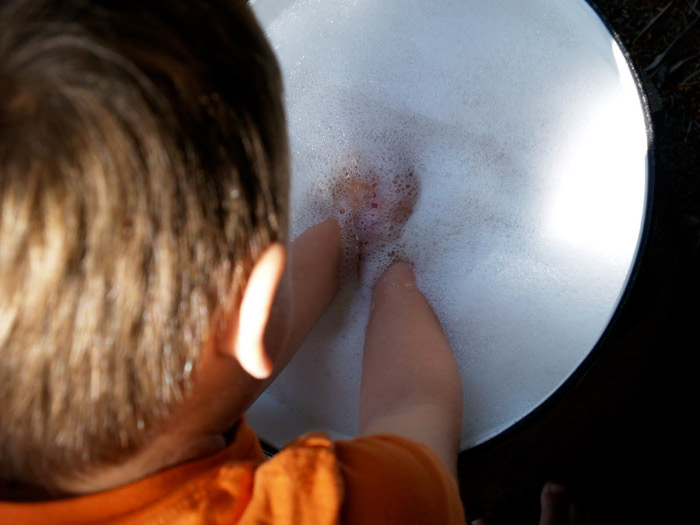Getting It Under Control
Feb 20, 2014
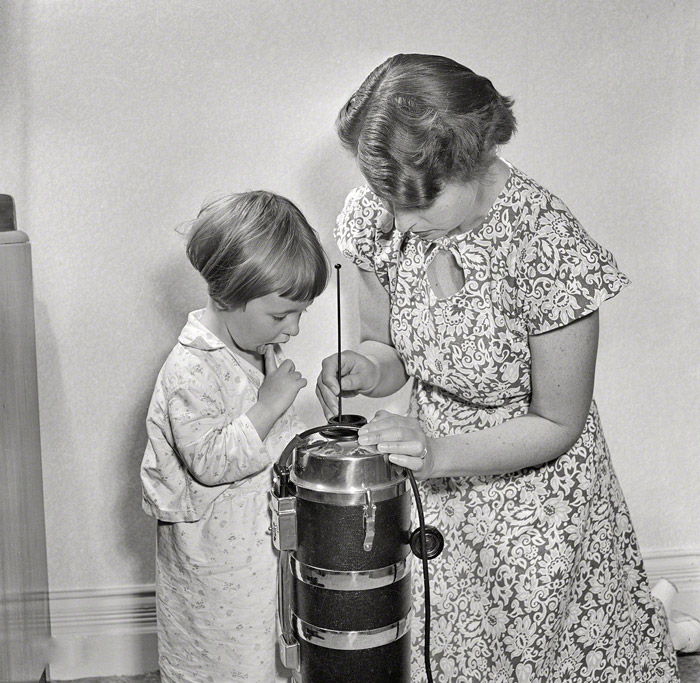 This photo appeared in the 19 January 1951 edition of the Wellington, New Zealand, Evening Post. The caption: "Common accidents in the home." Best to leave it at that.
This photo appeared in the 19 January 1951 edition of the Wellington, New Zealand, Evening Post. The caption: "Common accidents in the home." Best to leave it at that.
Feb 20, 2014
 This photo appeared in the 19 January 1951 edition of the Wellington, New Zealand, Evening Post. The caption: "Common accidents in the home." Best to leave it at that.
This photo appeared in the 19 January 1951 edition of the Wellington, New Zealand, Evening Post. The caption: "Common accidents in the home." Best to leave it at that.
Mar 29, 2014
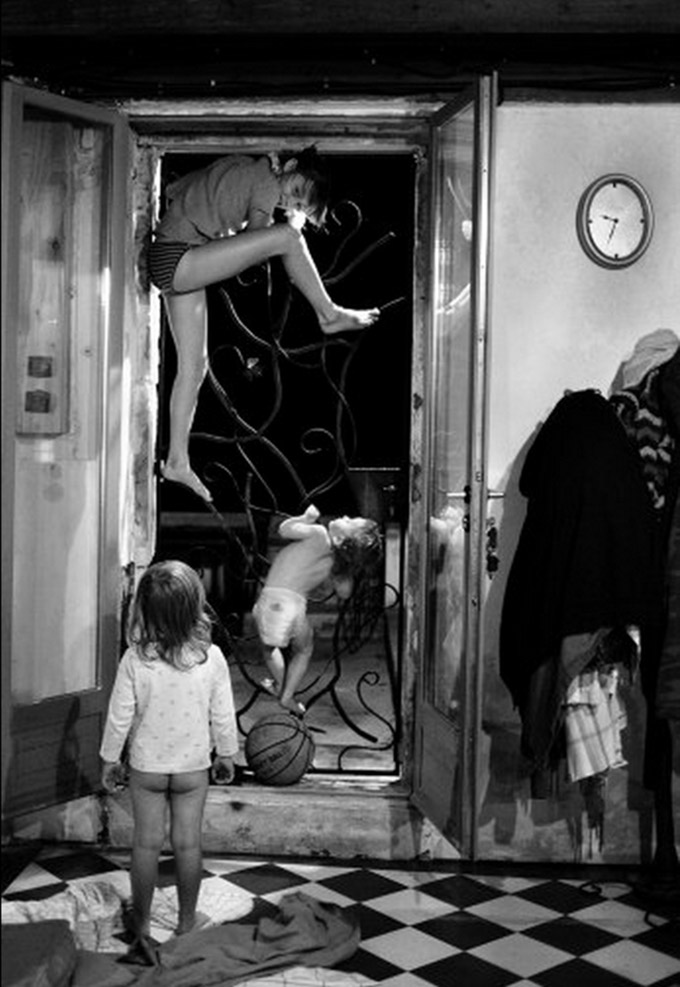 Photographer Alain Laboile and his partner have six children. Those of us familiar with life in large families have seen some version of this scene before. Some of us have seen versions of this scene more than a few times and might feel we will live longer if we don't have to relive them.
Photographer Alain Laboile and his partner have six children. Those of us familiar with life in large families have seen some version of this scene before. Some of us have seen versions of this scene more than a few times and might feel we will live longer if we don't have to relive them.
Laboile, of Bordeaux, France, is actually a sculptor by trade, who first picked up a camera about ten years ago to catalog his sculpting. He turned the lens on his growing family around the house, and the rest, as they say, is documentary.
Apr 26, 2014
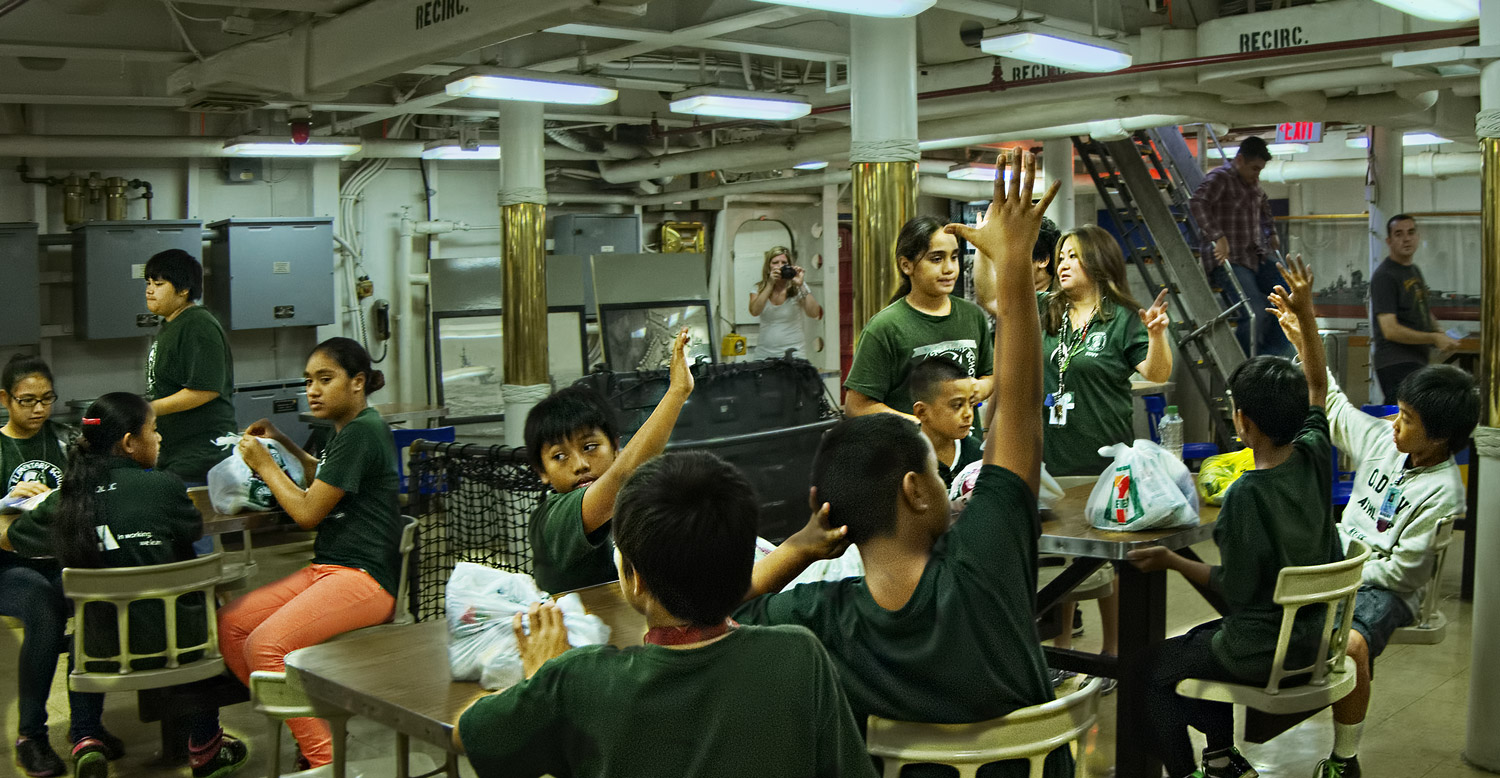 Some of the middle school students participating in their class field trip to the battleship USS Missouri in Pearl Harbor, Hawaii, appear enthusiastically prepared to answer their teacher's question. Of course the question might be: Who's ready for lunch?
Some of the middle school students participating in their class field trip to the battleship USS Missouri in Pearl Harbor, Hawaii, appear enthusiastically prepared to answer their teacher's question. Of course the question might be: Who's ready for lunch?
The students are seated in one of several mess halls deep in the ship; several ladders above them is the deck where the Japanese surrendered on September 2, 1945, to Gen. Douglas MacArthur and representatives of all the Allied powers, finally ending World War II. The American flag flown that day at the ceremony had only 31 stars and was hung backwards, stars at upper right; it was the original flag brought to Tokyo by Admiral Perry in 1853 when Japan was first opened to international trade, and it had frayed so badly over the years that one side of it–the right side–was sewed over with a protective linen covering, leaving only the reverse side for display.
Just below the deck where the ceremony took place is a dented spot in the hull. Six months before the surrender, during the bombardment of Okinawa, a kamikaze pilot had crashed into the Missouri, losing a wing off his plane and starting a gasoline fire aboard ship. The fire was quickly put out, and the ship was only dinged, not seriously damaged; the pilot, however, did not survive. The story is that the Missouri's captain, William Callaghan, had to rescue the pilot's corpse from sailors attempting to summarily dispose of it; Captain Callahan insisted on a full funeral service for the pilot, with military honors and burial at sea. The dent in the hull was never repaired.
After World War II, President Truman decommissioned every other battleship in the navy but insisted on maintaining the Missouri in active service, over the objections of military advisors. Battleships had no role to play in postwar navy planning. The Missouri was sent to Korea, however, during that conflict. It was then mothballed–but returned to duty one last time in 1984 during President Reagan's military buildup. It provided artillery support during the First Gulf War before being finally deactivated.
Since 1998, the Missouri has been a major tourist attraction at Pearl Harbor, as well as a school field trip destination. And there's plenty on board for the schoolchildren to see: big guns, tall stacks of bunks, signs insisting on short showers while at sea, and, of course, the backwards flag and the dent in the hull.
Up top, on deck underneath some of those big guns, a few members of the Marine Band entertained the tourists. The day we and the middle schoolers visited, the band played "Jingle Bell Rock," but now that it's springtime, the setlist has probably changed.
Jun 4, 2014
 Girls grooming a very small horse in Gibbston, New Zealand.
Girls grooming a very small horse in Gibbston, New Zealand.
Jun 16, 2014
 At the June recital, the Ballet I students got to dance on stage along with the big kids. They were fairies. After the recital, they were all smiles.
At the June recital, the Ballet I students got to dance on stage along with the big kids. They were fairies. After the recital, they were all smiles.
Jul 7, 2014
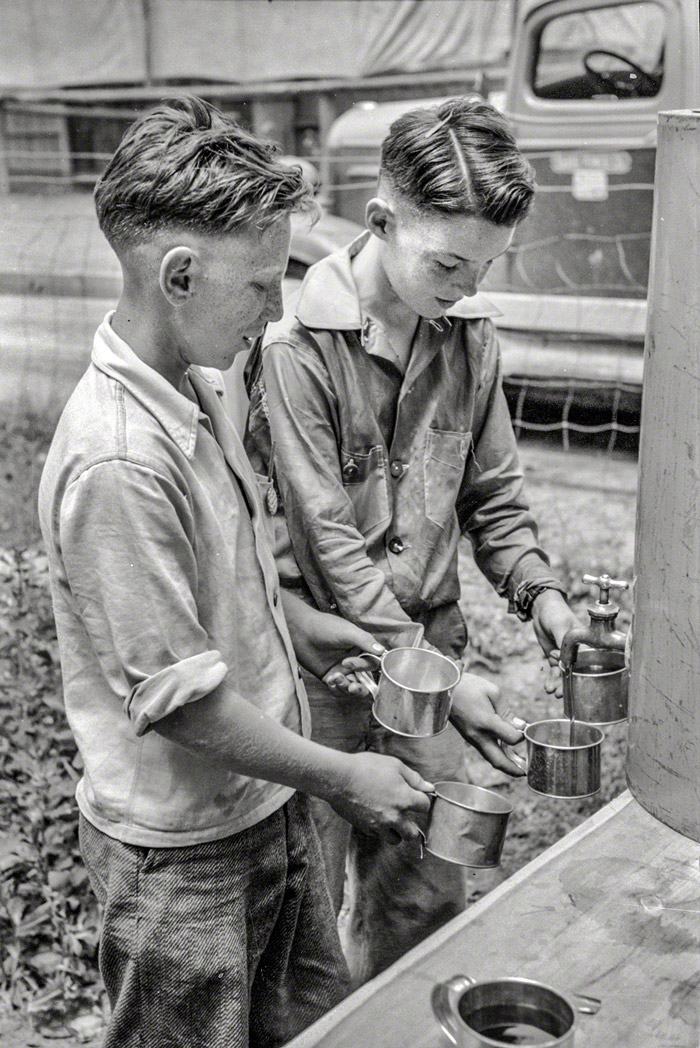 There was free coffee for all at the Fourth of July picnic in Vale, Oregon, in 1941. The people of Vale were mostly newcomers to eastern Oregon, lured there in the 1930s by the Vale-Owhyee irrigation project. Most of the new residents were farm people from the Dust Bowl region, and over the span of just a few years they changed the culture of what had previously been a ranching community.
There was free coffee for all at the Fourth of July picnic in Vale, Oregon, in 1941. The people of Vale were mostly newcomers to eastern Oregon, lured there in the 1930s by the Vale-Owhyee irrigation project. Most of the new residents were farm people from the Dust Bowl region, and over the span of just a few years they changed the culture of what had previously been a ranching community.
In 1941 for the first time the Vale Fourth of July festivities did not include a rodeo. Instead, there was a parade, a baseball game, a tug of war, a greased pig race, a motorcycle show, and, of course, fireworks. It was quite a full day of activities, and even the free coffee was not enough to keep everybody awake.
Dec 14, 2014
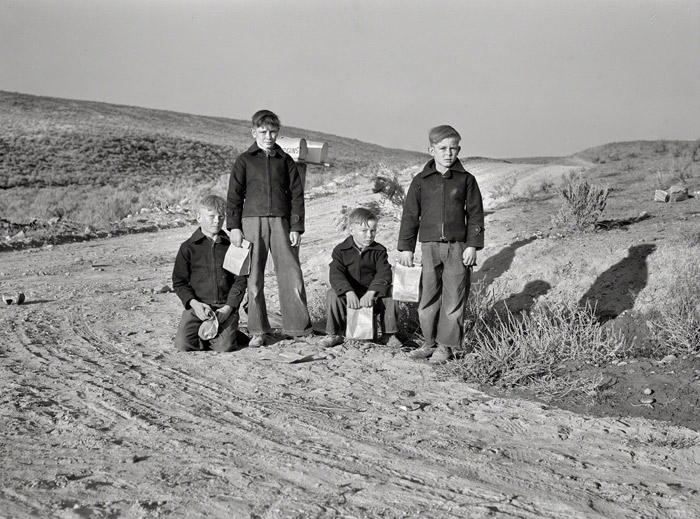 "Boys from Dead Ox Flat waiting for the school bus in the morning. Malheur County, Oregon."
"Boys from Dead Ox Flat waiting for the school bus in the morning. Malheur County, Oregon."
Dorothea Lange took this picture in October 1939 for the Resettlement Administration. During the mid-1930s, the desert country of eastern Oregon and southwestern Idaho attracted thousands of Dust Bowl refugees seeking construction work on the Owhyee dam and irrigation project; as the project came on line between 1935 and 1939, thousands more refugees sought agricultural work on the newly irrigated cropland.
The name on the mailbox behind the boys is revealed in another of Lange's photos of the same scene: H.E. Hudgins. According to the 1940 census, Herbert and Jessie Hudgins lived thereabouts--but with only two children, an eleven-year-old girl and a six-year-old boy. Herbert Hudgins worked as a ditch rider, assigned to travel the length of the new canals and laterals, cleaning out debris and opening and closing the check boards that control the flow of water to different growers' acreage.
The boys look to be wearing new clothes and fresh haircuts, perhaps because the photo was taken on the first day of a new school year. The picture is dated from the month of October, but this was a time and place where school would not begin until after the year's harvest was in.
Feb 4, 2015
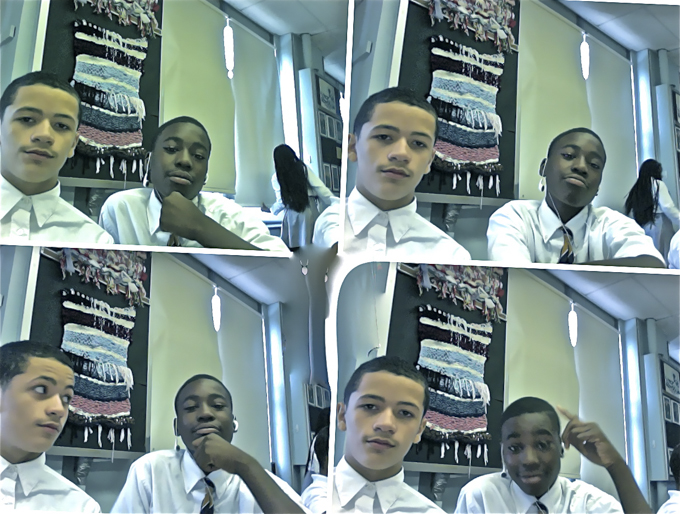
Philly Photo Day 2014, back in October, was a school day. Maybe these kids were in art class?
Apr 26, 2015
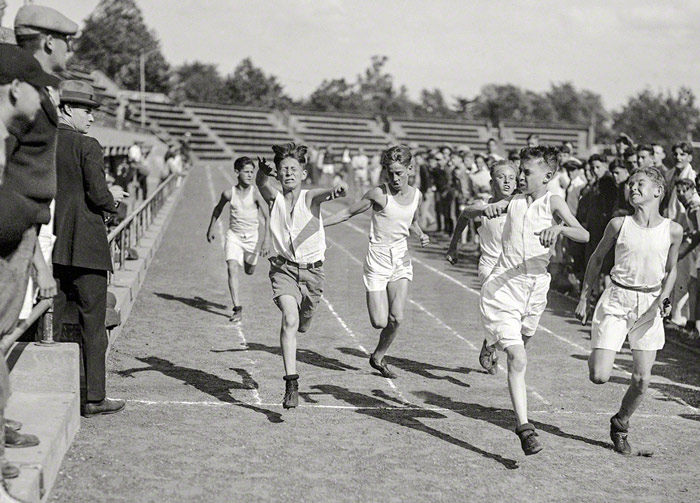 Runners lunge across the line in the 60-yard dash, 80-pound class. This race was won and lost on September 6, 1924, on the track in back of Central High School, Washington, D.C.
Runners lunge across the line in the 60-yard dash, 80-pound class. This race was won and lost on September 6, 1924, on the track in back of Central High School, Washington, D.C.
Mar 27, 2017
Apr 27, 2017

These picnic table warriors from the late 1980s successfully repelled would-be invaders from our backyard on 5th Avenue in Tuscaloosa. That's John at left, Ted at right, and their friend Scott Cartwright in the middle.
Mar 9, 2018
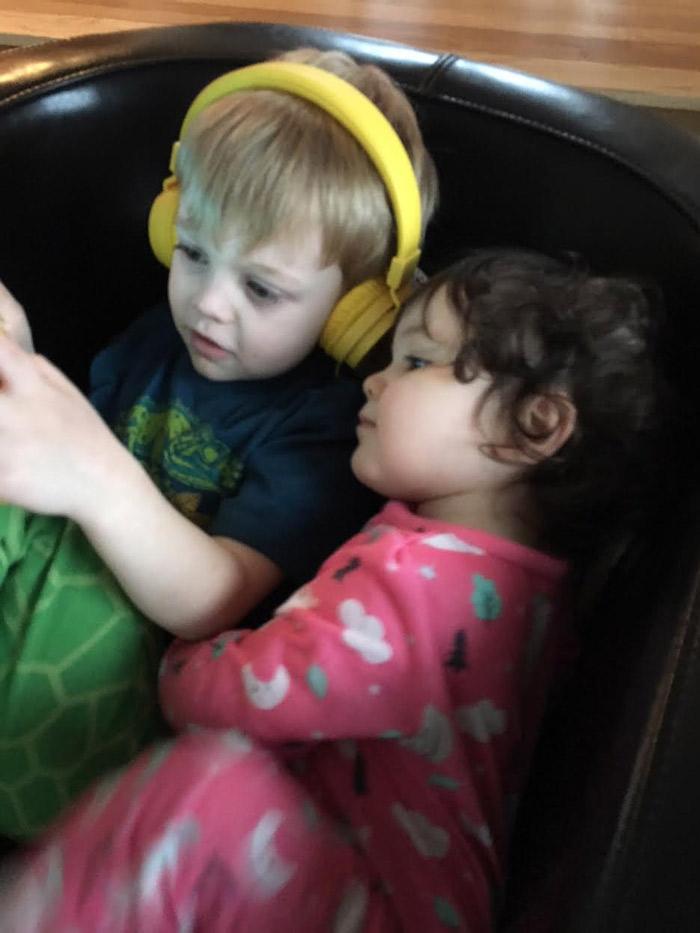 Louis and Robin enjoy a bit of screen time together during a recent reunion weekend in Nashville. The people reunioning were five friends from Central High School in Tuscaloosa, Alabama, class of 1996 and 1997, who came in from Taiwan, Seattle, Indiana, Tuscaloosa, and Nashville, with spouses and kids. Louis's father and Robin's father have known each other since about the first or second grade.
Louis and Robin enjoy a bit of screen time together during a recent reunion weekend in Nashville. The people reunioning were five friends from Central High School in Tuscaloosa, Alabama, class of 1996 and 1997, who came in from Taiwan, Seattle, Indiana, Tuscaloosa, and Nashville, with spouses and kids. Louis's father and Robin's father have known each other since about the first or second grade.
Mar 14, 2018

There are chess players on the streets of Havana, and Cubans have won the World Chess Championship multiple times, notably in 1921 when José Raúl Capablanca beat the longtime German champion Emanuel Lasker.
Ché Guevara was a chess player who started an annual international chess tournament in Havana in 1962, when he was serving as post-revolutionary head of the Cuban National Bank. Here, Ché watches the tournament play of a Yugoslavian revolutionary he had befriended:
In 1965, the U.S. government would not allow Bobby Fischer to travel to Cuba to participate in the tournament, so he played via telex from New York.
Today, Cuban children learn to play chess at school, and last fall they participated in a national tournament commemorating the fiftieth anniversary of Ché's death.
Mar 15, 2018
 This is the only baseball we saw in Havana, in a dead end cul de sac with boarded-up windows and no cars parked or passing through. Everywhere else we went in this big, densely populated city, airborne baseballs would not have been appreciated.
This is the only baseball we saw in Havana, in a dead end cul de sac with boarded-up windows and no cars parked or passing through. Everywhere else we went in this big, densely populated city, airborne baseballs would not have been appreciated.
At least in part for this reason, soccer is more popular than baseball among children playing in city streets and sidewalks, and European and Latin American soccer is widely followed. But baseball has been played professionally in Cuba since the 1870s, long before the United States was ever involved in the country. Even back then, we're told, baseball had an anticolonial significance, played in lieu of sports such as bullfighting imported from Spain.
Castro famously encouraged baseball as a source of revolutionary and nationalistic pride. In recent years, Cuban baseball teams have played exhibition games against U.S. major league teams, and the Cubans win about half the time.
Mar 16, 2018
 During a slow afternoon at a bar in Havana Vieja, one of the bartenders watches a Cuban national team wrestling match on tv. The Cubans are traditional powers in wrestling, boxing, judo, and other martial arts, often taking home dozens of Olympic medals.
During a slow afternoon at a bar in Havana Vieja, one of the bartenders watches a Cuban national team wrestling match on tv. The Cubans are traditional powers in wrestling, boxing, judo, and other martial arts, often taking home dozens of Olympic medals.
Below are scenes of training and competition at a youth wrestling program in downtown Havana, housed in an old Basque gymnasium. Photos by Alexandre Meneghini for Reuters.
Apr 9, 2018
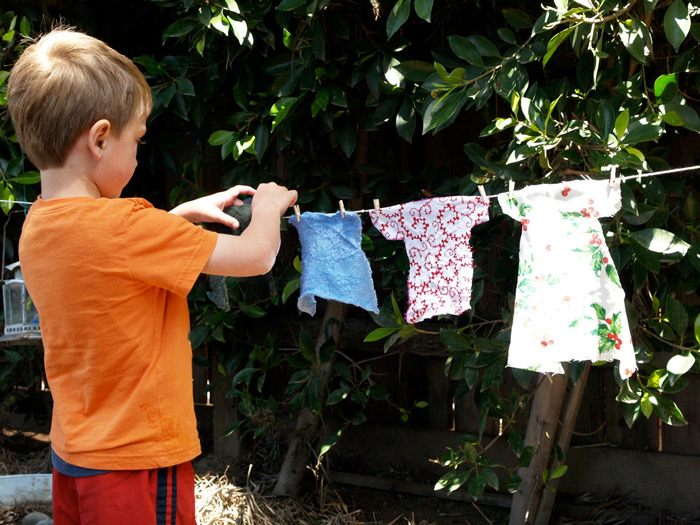 There are many stories of children reading, or listening to, the adventures of Laura and her family in Laura Ingalls Wilder's Little House books and deciding to try that way of life themselves.
There are many stories of children reading, or listening to, the adventures of Laura and her family in Laura Ingalls Wilder's Little House books and deciding to try that way of life themselves.
Their attempts could prove exciting and educational. We know of one eight-year-old who set her grandmother's house on fire when she was inspired by her reading to try to go to bed by candlelight.
The little boy pictured here, Teddy, and his big sister Kitty, were just a few chapters into the very first book, Little House in the Big Woods, when
Kitty sighed deeply while we were reading. I asked her what was making her sad, and she replied that she wished we were a family who washed our clothes by hand like Laura and Ma did in the book. 'Well,' I said, 'Let's make some clothes for you and Teddy to wash.'
Today, we had a wonderful day making, and washing, prairie clothes. . . . Teddy washed and hung out his clothes three times.
